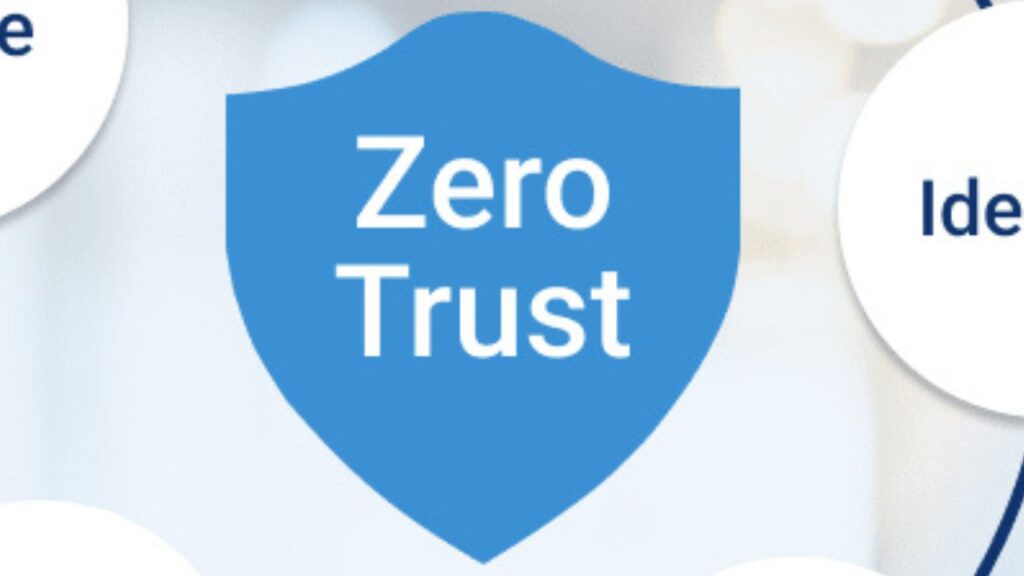In today’s digital landscape, cyber threats are more sophisticated than ever. Traditional security models that rely on perimeter defenses—like firewalls and VPNs—are no longer sufficient. Enter Zero-Trust Security Models, a revolutionary approach that operates on the principle: “Never trust, always verify.”
With high-profile breaches affecting businesses globally, organizations are rapidly adopting Zero-Trust frameworks to enhance security. But what exactly is Zero-Trust, and why is it crucial for modern cybersecurity?
In this blog, we’ll explore:
- What Zero-Trust Security means
- Core principles of Zero-Trust Architecture
- Benefits of adopting a Zero-Trust model
- Steps to implement Zero-Trust Security
- Common challenges and solutions
Let’s dive in!
What is Zero-Trust Security?
Zero-Trust Security is a cybersecurity framework that eliminates the concept of trust within a network. Unlike traditional models that assume everything inside a corporate firewall is safe, Zero-Trust treats every user, device, and application as a potential threat—whether inside or outside the network.
The term was coined by Forrester Research in 2010, but it gained mainstream attention when Google implemented its BeyondCorp model, proving that Zero-Trust could work at scale.
Why Traditional Security Models Fail
- Perimeter-based security is outdated – With remote work and cloud adoption, the network perimeter has dissolved.
- Insider threats are rising – 60% of data breaches involve insider negligence or malicious intent (Verizon 2023 DBIR).
- Attackers bypass firewalls easily – Phishing, malware, and credential theft make perimeter defenses ineffective.
Zero-Trust addresses these gaps by enforcing strict identity verification and least-privilege access.
Core Principles of Zero-Trust Architecture
The National Institute of Standards and Technology (NIST) outlines key principles in its SP 800-207 guidelines:
- Never Trust, Always Verify
- Every access request must be authenticated, authorized, and encrypted.
- Multi-factor authentication (MFA) is mandatory.
- Least Privilege Access
- Users and devices get only the minimum access needed.
- Reduces attack surfaces by limiting lateral movement.
- Micro-Segmentation
- Divides networks into smaller zones to contain breaches.
- Used heavily in cloud environments (AWS, Azure).
- Continuous Monitoring & Risk Assessment
- Real-time analytics detect anomalies.
- AI-driven tools (like Darktrace) help identify threats.
- Assume Breach Mindset
- Plans for inevitable breaches with rapid response protocols.
Benefits of Zero-Trust Security
Adopting a Zero-Trust model offers several advantages:
✅ Reduces Attack Surface – By enforcing strict access controls, attackers have fewer entry points.
✅ Improves Compliance – Meets GDPR, HIPAA, and CCPA requirements by default.
✅ Supports Remote & Hybrid Work – Secures access from any location without relying on VPNs.
✅ Prevents Lateral Movement – Even if hackers breach one segment, they can’t easily spread.
✅ Enhances Visibility – Real-time monitoring helps detect threats faster.
According to Microsoft, organizations that implement Zero-Trust see a 50% reduction in security incidents.
How to Implement Zero-Trust Security
Step 1: Identify Sensitive Data & Assets
- Conduct a data audit to classify critical assets.
- Use tools like Varonis or Netwrix for data discovery.
Step 2: Implement Strong Identity & Access Management (IAM)
- Enforce MFA (Microsoft Authenticator, Duo).
- Use Single Sign-On (SSO) for centralized access control.
Step 3: Adopt Micro-Segmentation
- Break networks into isolated zones (e.g., finance, HR).
- Cloud providers like AWS and Azure offer built-in segmentation tools.
Step 4: Deploy Continuous Monitoring
- Use SIEM solutions (Splunk, IBM QRadar) for real-time alerts.
- Apply User and Entity Behavior Analytics (UEBA) to detect anomalies.
Step 5: Automate Threat Response
- SOAR platforms (Palo Alto Cortex XSOAR) automate incident response.
Step 6: Educate Employees
- Train staff on phishing, social engineering, and secure access habits.
Challenges & Solutions in Zero-Trust Adoption
| Challenge | Solution |
|---|---|
| Legacy systems are incompatible | Gradually phase in Zero-Trust with hybrid models |
| High implementation costs | Start with critical assets, scale over time |
| Employee resistance | Conduct training & demonstrate benefits |
| Complex policy management | Use automated policy enforcement tools |
FAQs About Zero-Trust Security
1. Is Zero-Trust only for large enterprises?
No, businesses of all sizes can adopt Zero-Trust. Start with critical systems and expand.
2. Does Zero-Trust eliminate the need for firewalls?
No, firewalls still play a role but are part of a larger Zero-Trust strategy.
3. How long does Zero-Trust implementation take?
It’s a gradual process—6 months to 2 years, depending on complexity.
4. Can Zero-Trust prevent ransomware?
Yes, by restricting lateral movement, Zero-Trust limits ransomware spread.
5. What’s the difference between Zero-Trust and VPN?
VPNs trust users once inside, while Zero-Trust continuously verifies access.
Conclusion
The Zero-Trust Security Model is no longer optional—it’s a necessity in today’s threat landscape. By adopting “never trust, always verify” principles, businesses can significantly reduce breaches, improve compliance, and secure remote workforces.
Key Takeaways:
✔ Zero-Trust treats all users & devices as potential threats.
✔ MFA, least privilege, and micro-segmentation are core pillars.
✔ Implementation requires IAM, continuous monitoring, and automation.
Ready to shift to Zero-Trust? Start with critical assets and leverage NIST’s guidelines for a structured approach.






